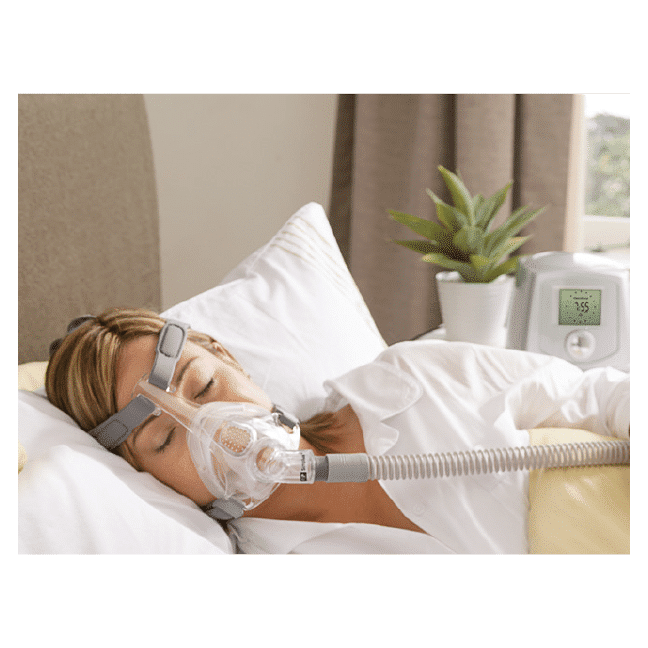Treatment without Surgery

[vc_row][vc_column el_class=”pages-contenu”][vc_column_text]It is possible to treat mild to moderate cases of sleep apnea without surgery, by changing certain lifestyle habits, here are a few:
_ Weight loss
_ Avoid alcohol and sleeping pills
_ Changing sleeping position to improve breathing
_ Stop smoking. Smoking increases the swelling of the airways and aggravates snoring.
_ Avoid sleeping on your back
Treatment with continuous positive airway pressure (CPAP)
Positive pressure treatment also called CPAP is a treatment by which air under pressure goes to the respiratory track via a mask worn at night. The mask is connected to a device that provides a continuous air flow under pressure. This air pressure is used to maintain the opening of the airway during sleep to sustain normal breathing without interruption.
CPAP remains the most effective therapy to treat sleep apnea when well tolerated by the patient. Snoring is often associated with obstructive sleep apnea syndrome, which is characterized by usual snoring and excessive daytime sleepiness. This results in reduced recuperative sleep phases. Therefore, those affected have higher risks of accidents and absenteeism from work. CPAP remains the standard therapy. It can be administered both in hospital and at home.
This method has already been proven to treat sleep apnea. The unit has a turbine that propels the air pressure by using a face mask applied to the nose or mouth or both simultaneously. In order for the treatment to be effective, it is imperative to respect the number of hours of use, which is a minimum of four hours per day. The benefits are immediate with a significant improvement in patients’ sleep and a reduction in cardiovascular risk.
Dental devices or mandibular advancement device
Dental devices are made to keep the airway open during sleep. Such devices must be custom designed by a specialist in order for the unit to be comfortable and does not damage the patient’s teeth. These devices are effective in treating snoring, mild and moderate apnea. It can sometimes be used for severe apnea when a CPAP therapy has failed.
A very common treatment is the mandibular advancement device, which is a mechanical alternative with a dual layer dental mouth guard allowing an advanced position of the lower jaw during sleep. The airways are then cleared allowing a normalized breathing during sleep. Before use, it is necessary to consult a specialist who will assess whether the device will have a good chance of success and if your teeth can bear it. It must be custom made by specialists and represents an effective alternative for the treatment of chronic snoring problems. The device is not always covered by insurance, although health professionals consider snoring and apnea to be a major public health problem.
Positional therapy
Positional therapy for sleep apnea is also a promising alternative that can be effective in complement to a CPAP or dental device. The patient must avoid the dorsal position when sleeping as it promotes snoring and apnea and must try to sleep on his side in order to enjoy a restful quality sleep. In order to achieve this, there are many accessories that can be used including the famous tennis ball placed in a piece of fabric sewn on the back of the clothes.
We also find original accessories such as T-shirts against snoring that are equipped with polystyrene foam cylinders in the back. Other therapeutic devices: the body pillow or a positional alarm that vibrates or rings when the patient goes on his back.
Sleep quality is essential. A bad breathing or snoring can affect sleep and awakes the sleeper several times a night, whether conscious or unconscious. The main goal is to stop daytime sleepiness, domestic, work or road accidents which are the direct consequences of OSA.[/vc_column_text][/vc_column][/vc_row]